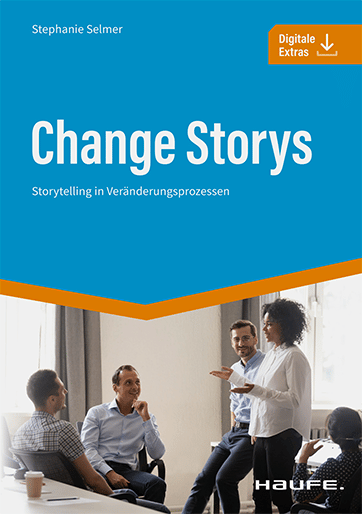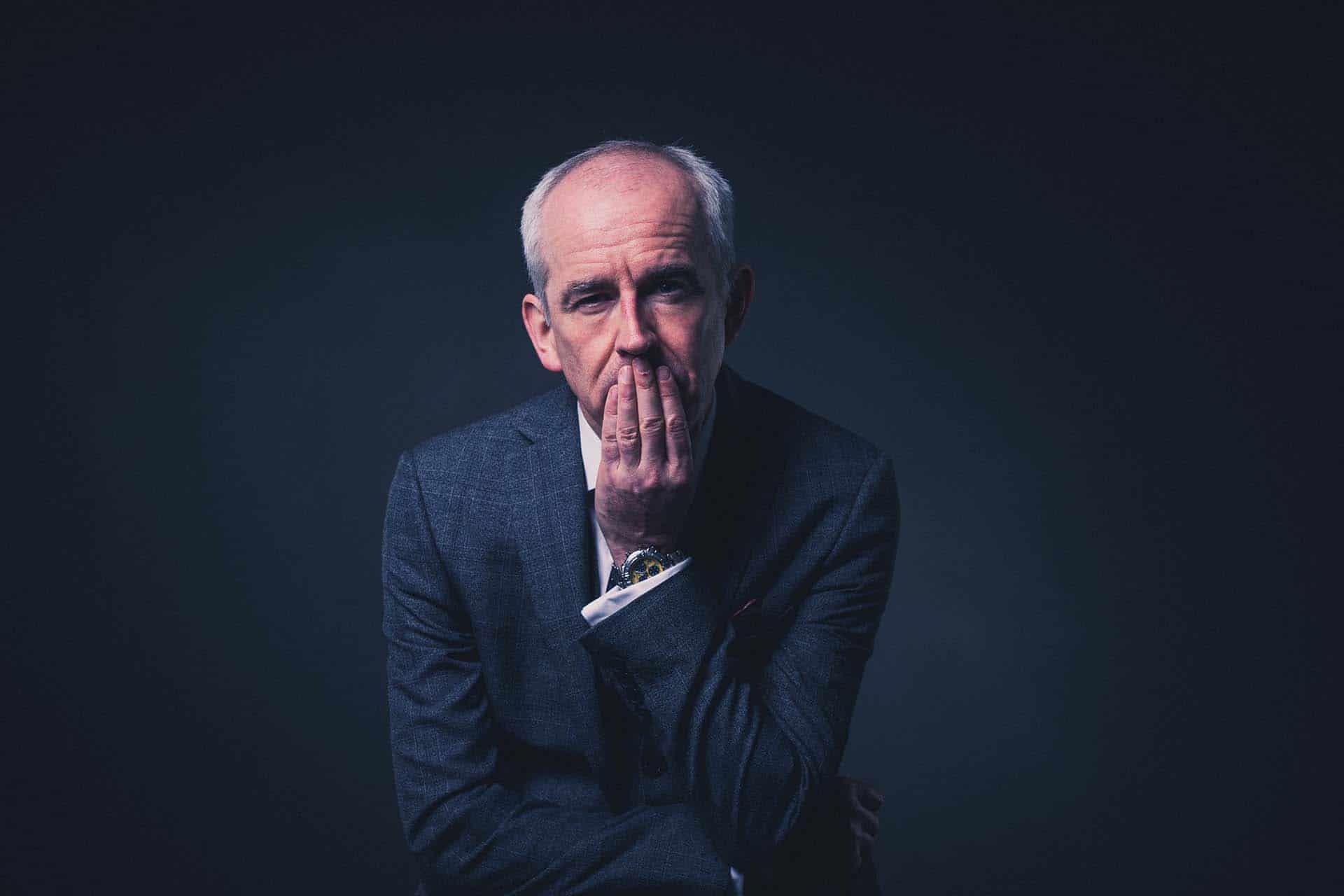Motives for storytelling in change processes
Storytelling has become a magic bullet for all areas of business in recent years. From marketing and sales to training and recruiting, communicators rely on the power of stories. It is only in the communication of change processes that it is still treated as a stepchild, even though it is in our blood to get our fellow human beings to rethink or act differently through storytelling.
For storytelling to work in change communication, however, it is not enough to simply tell an exciting story and hope that it will reach and appeal to everyone, or that the recipients will even pull out exactly the message that the project team wants. It is much more a question of the individual elements that have to be in place from the beginning, because it is very difficult to make improvements in this area. This includes that the change story needs to have a real connection to the project and that the details are worked out in such a way that it actually touches the people in the company.
The motives of the people affected by the change are among these details. Interestingly, the basic motives become visible a little differently in every company.
Basic human motives in the course of change processes
In his book “The achieving society”¹, the behavioural and social psychologist David Clarence McClelland describes three essential motives that are also important in the course of change processes:
- Belonging,
- power and
- achievement.
Belonging
We all strive to belong to a group. We associate belonging with safety, security, affection and friendship. In a business context, this list may seem strange at first glance, but belonging is expressed even in small situations. For example, we quickly feel a sense of belonging to those with whom we laugh together, have a coffee break or who bring us a document from the printer.
Power
The power motive seems at first to be an opposite motive. It describes a person’s efforts to assert his or her own will in a group, if necessary against resistance. However, it is precisely this that ensures the individuality we need in the group in order to remain visible.
Achievement
The last of the three best researched motives is the achievement motive. This is associated with the achievement of individual objectives, progress, creativity and variety. It shows us our self-efficacy and thus often value in the group. And even though it manifests itself in the desire for variety, among other things, it can be quite critical in the change process if this motive is not addressed.
We all carry these motives and the associated needs within us in varying degrees and usually they balance each other out.
Possible effects of a change
Changes sometimes seem banal, but for many affected people they come as a surprise. The change curve according to Kübler-Ross² shows quite correctly that a person in a change starts with a shock and then falls into the valley of tears. Of course, it does not have to be so dramatic that real tears flow. But in a change process the cards are reshuffled, which always has to do with uncertainty and insecurity.
If managers have so far only been able to serve the motives of individuals unconsciously in everyday life, this is usually no longer enough in uncertain times. The environment quickly becomes more preoccupied with itself and its own reaction to the change, and changes quickly create uncertainty. And that has consequences:
- People to whom belonging is particularly important worry about being left alone.
- The power motive shows itself in the increased desire to retain control over processes or people.
- And those for whom performance is particularly important quickly feel the fear of weakness or inability.
All these effects can be observed even in very simple change projects, for example when introducing new software:
An older colleague inwardly rejects the new software. He doesn’t like the user interface, everything seems to be somewhere else now and the new features are much too complicated to use. His office neighbour, with whom he otherwise gets along wonderfully, raises an eyebrow: “How can that be, the new programme is super – modern, clear and fast. The older colleague is unsure. Is it him? He no longer dares to voice his concerns aloud. But maybe his colleague will realise on his own how much better the previous programme was.
A manager misses the old programme in which she could regularly draw reports. The new reports look different. The figures are now put together differently and somehow they don’t seem right to her. Do the employees now have the possibility to improve their figures? She has to take a closer look and asks all team members for individual talks.
Another colleague liked the freedom she had so far to handle each case individually. With the new software, the processes and thus her area of responsibility are clearly delineated. Wasn’t it always good how she had decided in the customer’s interest until now? At first, she only feels her creativity has been curtailed, but the longer she thinks about it, she finds her work unchallenging, feels useless and simply replaceable.
And what can you do in such a situation? I would actively engage in storytelling and tell an individual, well thought-out change story.
How a change story addresses the motives
If you want to get serious about developing your change story, I recommend using a protagonist. In my opinion, he or she has the most important role in the whole change story.
The users identify with the protagonist and, like him or her, want to overcome the obstacles that stand in the way. In this context, the communication of motives quickly falls on fertile ground. Since everyone carries the previously mentioned motives within themselves, the protagonist may also find him/herself in situations in which sometimes one, sometimes the other motive is addressed. This can mean that they are either scratched in him or that she has to deal with what happens to people around her. And since it is best to tell the change story in short episodes, you can focus individual ones on specific motives.
All motives can either be actively attacked or particularly promoted by one party in the change story. Again and again this happens in narratives even without intentional action. A few examples from films show what this can look like:
- In “The Lord of the Rings” Frodo decides to leave the fellowship of the ring himself and continue the journey alone (belonging motive).
- In the Pixar film “Bolt”, the protagonist, a dog, is separated from his human by a chain of unfavourable circumstances and transported unnoticed to the other end of the USA (belonging motive).
- The character “Morpheus” in the “Matrix” series has both the power over freeing people from the Matrix and the ability to force the Council into a manoeuvre that the Council members were not fond of (power motive).
- The young scientist John Nash in “A beautiful mind”, played by Russell Crowe, aims to make nothing less than an outstanding discovery. Until he describes the “Nash equilibrium”, he cannot and will not complete his doctoral thesis (achievement motive).
Of course, you don’t have to make the Change Story and its protagonist as in-depth and comprehensive as it is in the films mentioned above, but you should still consider the motives in your story. To ensure that your change story remains credible and thus success-oriented, the following points are particularly important:
1. a balance between the motives
The protagonist should not be the power-hungry tyrant who over time becomes a prudent and trusting leader. No one will buy that. Nor should the protagonist be eternally insecure about his or her own achievements and suddenly find himself or herself the saviour of the company; such a thing is more likely to happen in fairy tales. And a main character who has long seen himself as a sad loner and suddenly realises that his environment has long consisted only of fans is not very credible either.
That seems exaggerated to you? Make no mistake. In the heat of the moment and when you’re really deep into the development of the story, this happens more often than you might think.
So keep a cool head and keep looking at your change story with a little distance. Are the motives balanced? Are they all addressed in small and everyday situations rather than overshadowing the protagonist’s life? And would you still believe this story yourself?
2. the motives do not harm the protagonist
If you create a balance between the individual motives, it is also important that the motives do not harm the protagonist’s reputation.
His environment sees him critically and reacts to his excessive needs. Conflicts may also arise here and there. The full extent of the violated motives and the greatest criticism, however, happen in the protagonist’s head.
3. the motives and the needs arising from them must be served
The protagonist must not be a superhuman (if he/she is a human being). On the contrary, he/she is allowed to struggle with oneself and the situation and to experience ups and downs, because this is how recipients of the change story can identify with the protagonist.
This also means that the protagonist has a right to have his or her motives and the needs that arise from them served. Even if the protagonist is alone at times, feels powerless or useless, at least at the end of the episode he/she is allowed to recognise his/her self-efficacy, gain some power and find himself/herself in a community.
After all, this is what the users also want for the change process: After the uncertain phase, a new security follows and the situation changes for the better for those involved.
What you can and cannot expect from storytelling with change stories
Storytelling is a powerful tool, also and especially in change processes. If I now address your personal power motive, it happens rather accidentally, but in fact you should also be aware of the limits of this power:
With a good change story, you have the opportunity to address many colleagues who would otherwise not be receptive to change. But even with storytelling, you should not imagine that you can really “take along” all those affected, because that would probably be more of a fairy tale. And who believes in fairy tales in the course of change processes?
Notes:
[1] David C. Mcclelland: The Achieving Society
[2] Elisabeth Kübler-Ross: On Death and Dying
Stephanie Selmer has written a very useful, readable, German-language book on storytelling and change stories: Change Storys – Storytelling in Veränderungsprozessen.
In the t2informatik Blog she has revealed some interesting details about the content of the book, her personal motives and the target audience.
If you like the post or want to discuss it, feel free to share it in your network.
Stephanie Selmer has published other articles in the t2informatik Blog, including

Stephanie Selmer
Strong companies do not only rely on new IT systems for their way into the future, but above all on their employees. Stephanie Selmer supports organisations in making changes, improving cooperation, achieving common goals and finding IT professionals. Her clients include medium-sized companies from all sectors who see digitalisation as an opportunity to empower their employees.



